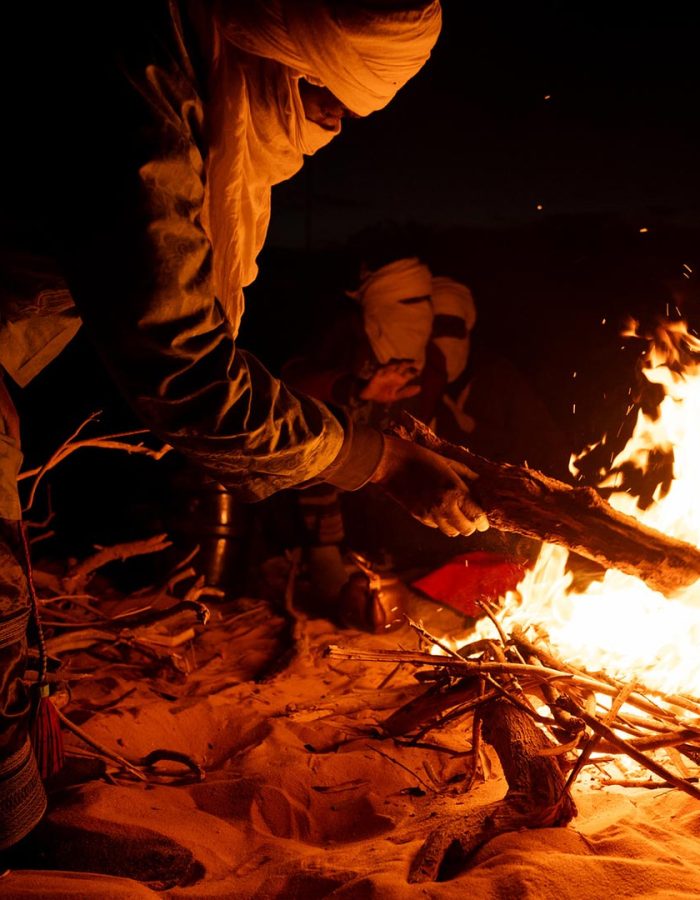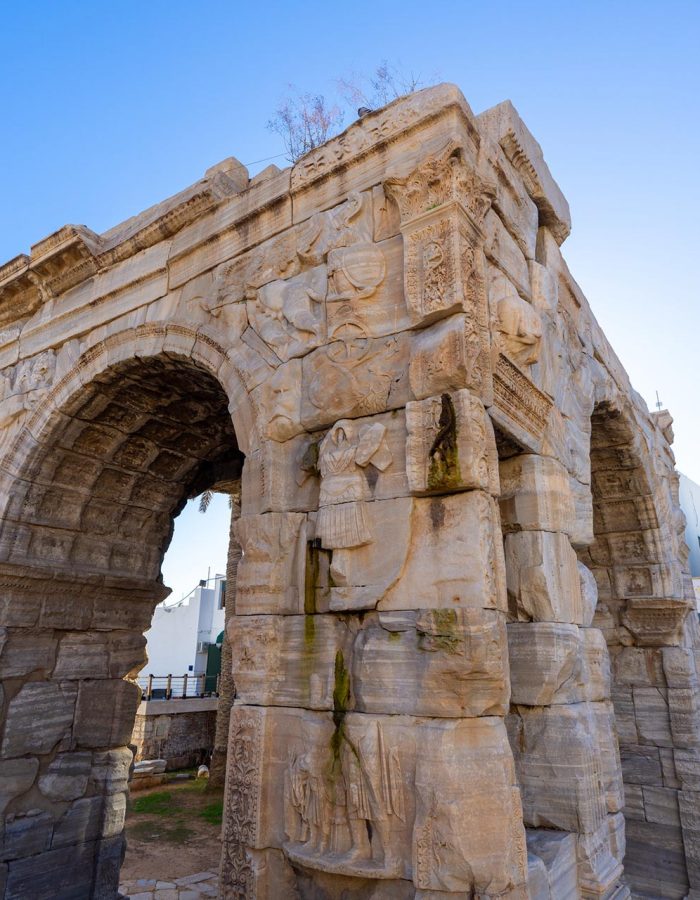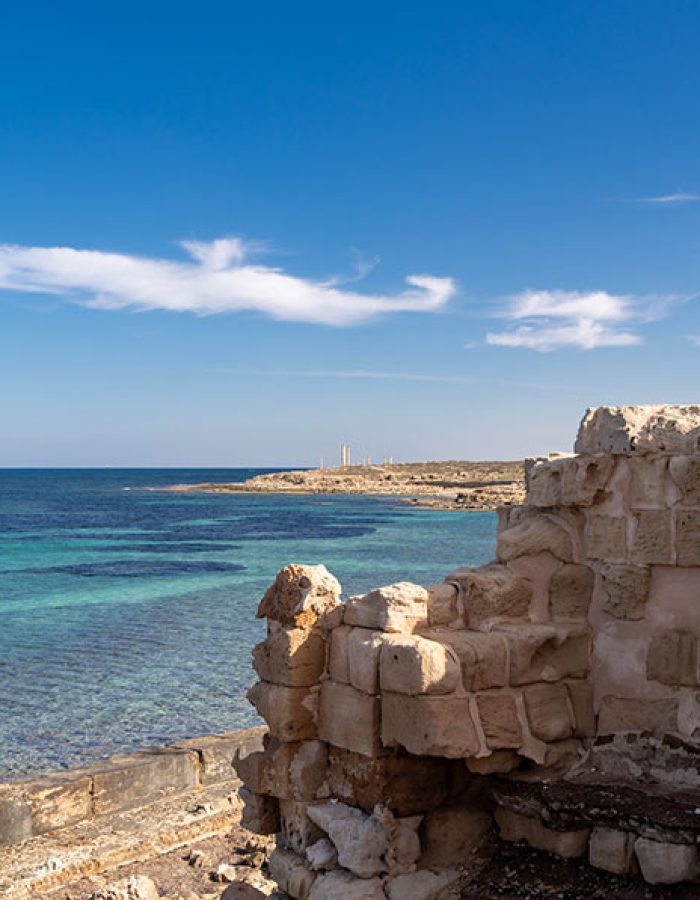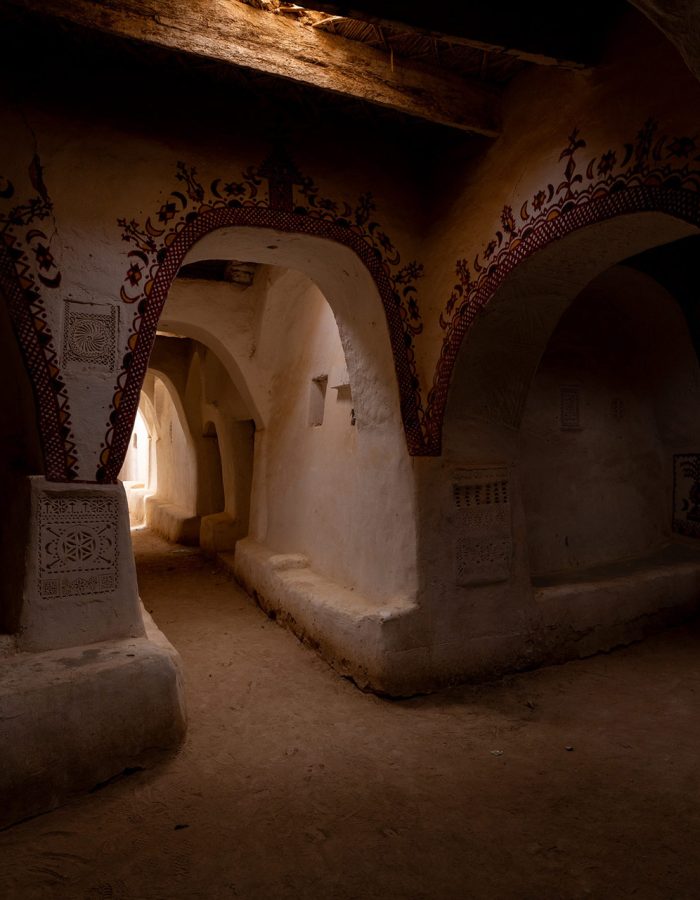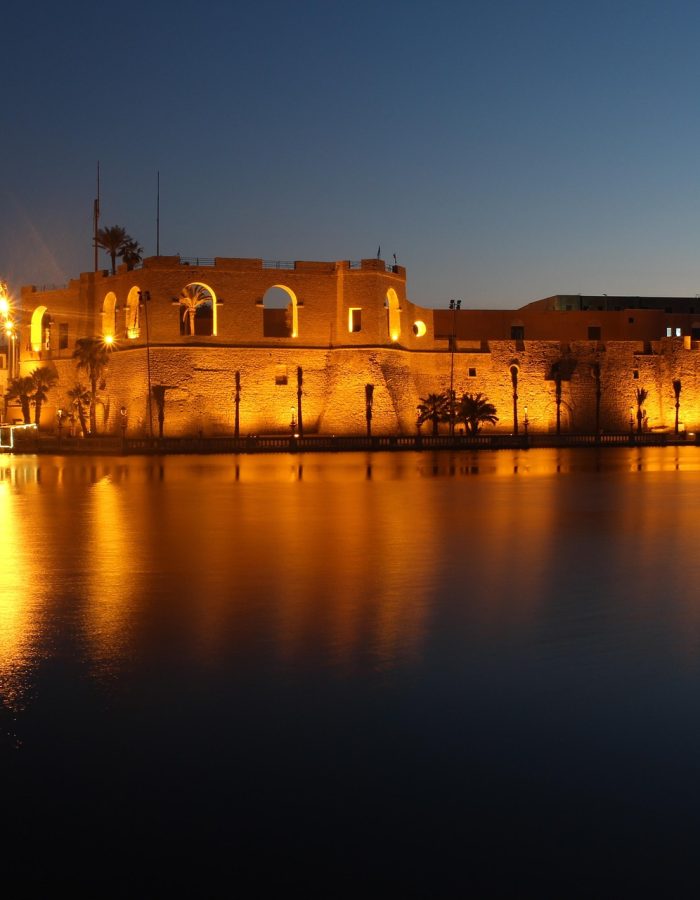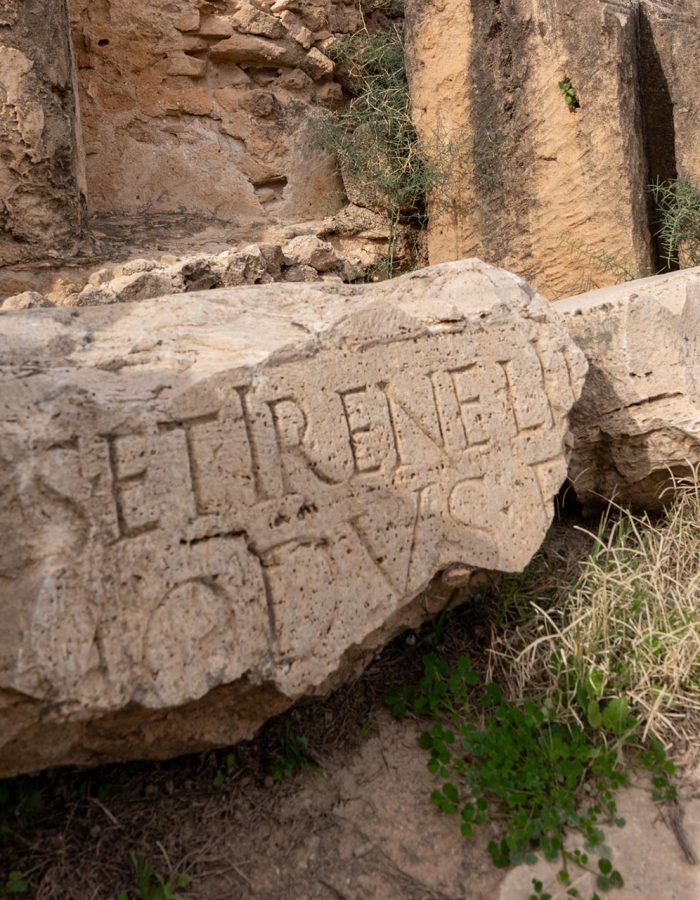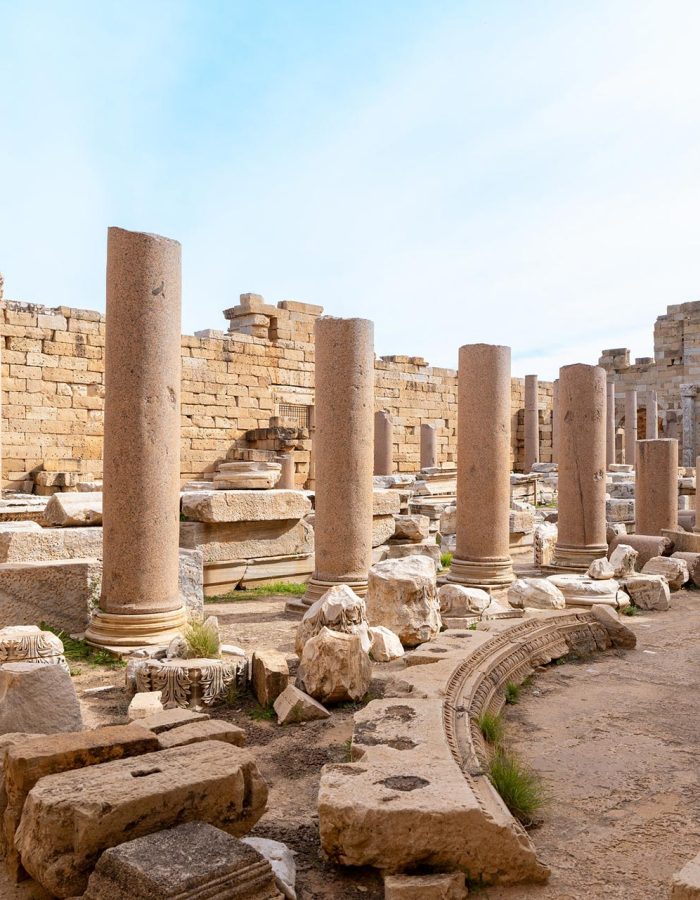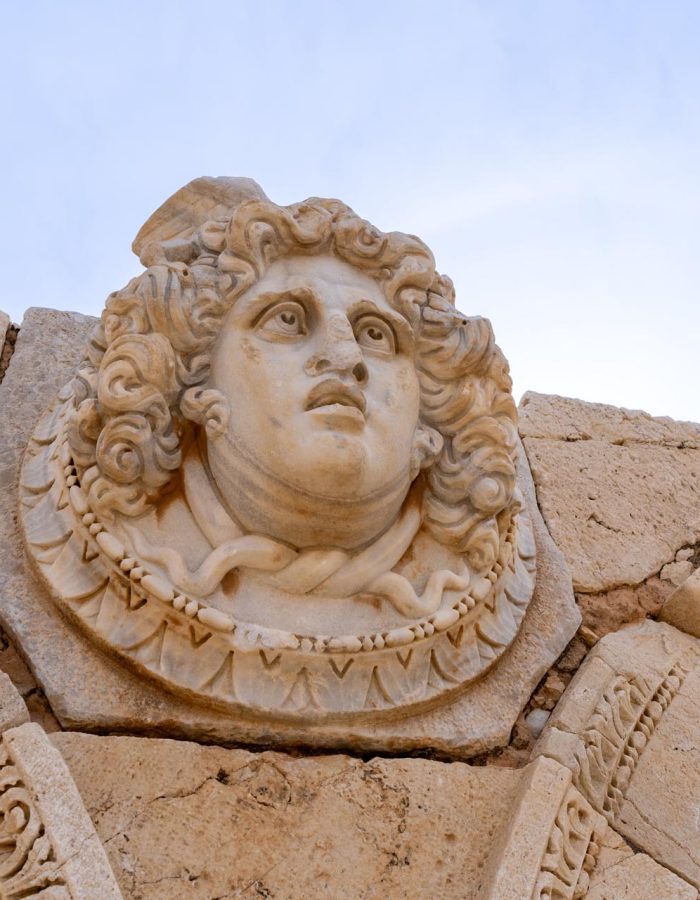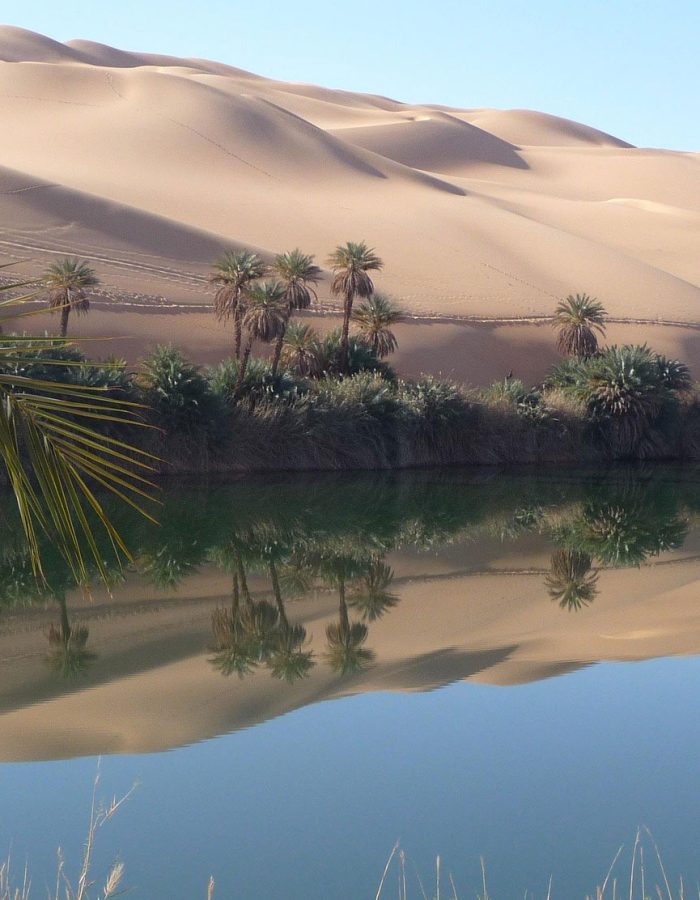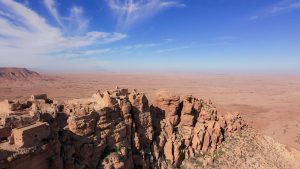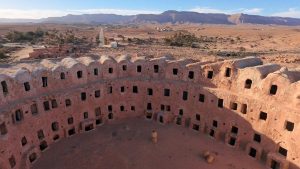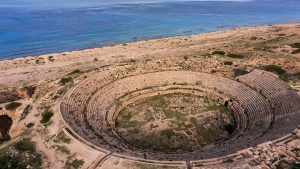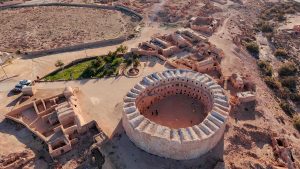Somewhere between the whispering dunes of the Ubari Sand Sea and the prehistoric silence of the Tadrart Acacus, the Tuareg people move with a grace born of centuries. You might spot them first in Ghat’s medina—men cloaked in indigo, their faces veiled but eyes unmistakably alive, or hear the soft rhythm of a tindé drum echoing across the desert at dusk. For travelers seeking the soul of Libya tours, it is here, in the Fezzan, that the Sahara speaks clearest—and in the voice of the Tuareg, her guardians.
Children of the Desert
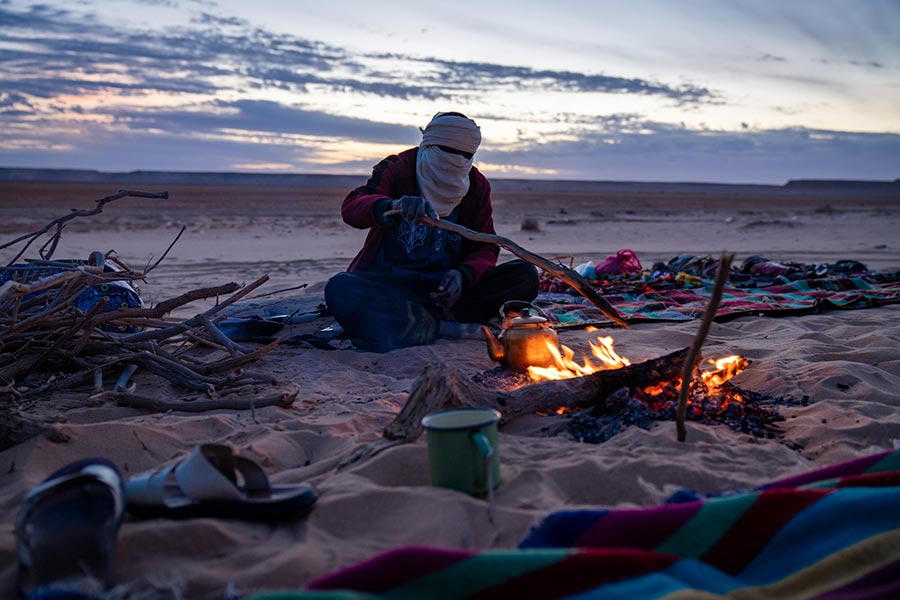
The Tuaregs are a branch of the Amazigh (Berber) peoples, speakers of Tamahaq, the southernmost Berber language whose vowels seem to drift like wind through canyon rock. In Libya, their presence is rooted in the southwest—especially around Ghat, the majestic Tadrart Acacus region, and the scattered palm-ringed oases of Ubari. They are known collectively as the Kel Ajjer, the “People of Ajjer,” whose lands stretch into Algeria and echo the nomadic pulse of trans-Saharan identity.
Unlike nation-states that rise and fall, the Tuareg have never been defined by borders. Their clans—kel—is the real foundation: Kel Ahaggar, Kel Ajjer, Kel Ifoghas. Each with its own rhythms and customs, but all bonded by shared codes of honor, hospitality, and desert knowledge. It’s often said they descend from the Garamantes, the enigmatic ancient civilization of Libya’s deep Sahara, who once built underground aqueducts and ruled the desert caravan routes long before Rome’s sandaled armies reached Africa’s coast. The truth may be more complex, but the connection still lingers in local lore.
These were not people of palaces, but of caravans. Of salt and gold and the wisdom to find a spring after a thousand dunes. For centuries they controlled the desert trade routes that stitched together the economies of North Africa and the Sahel, navigating the invisible highways of wind and stars. The desert was not their prison—it was their world.
The Indigo Veil: Identity and Function in the Tagelmust
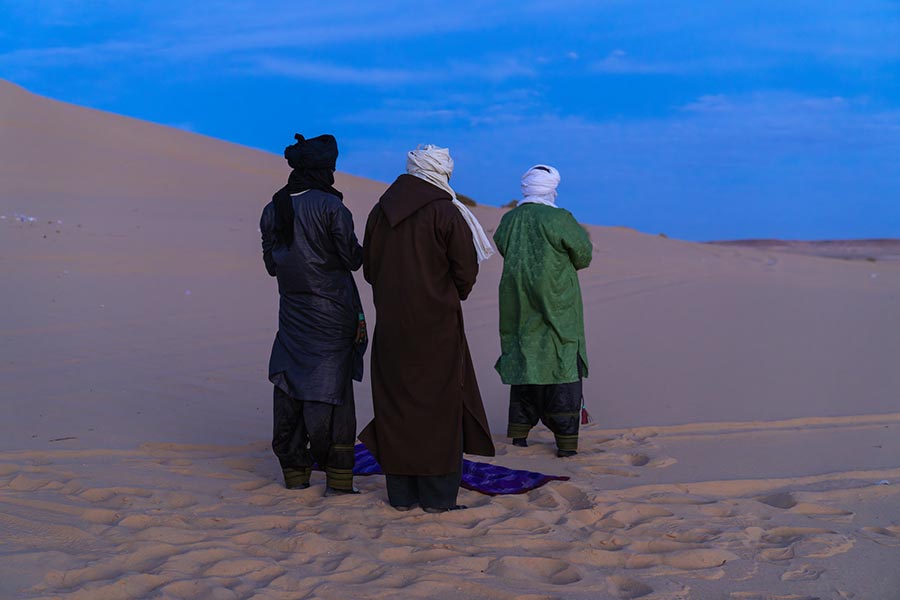
Perhaps no image is more iconic than the Tuareg man cloaked in deep indigo, his face obscured by a long veil known as the tagelmust. It is at once practical and sacred—wrapping his head and mouth, filtering the sand and sun, but also shielding his soul from view.
The tagelmust is donned at puberty in a rite of passage that marks the boy’s arrival into manhood, modesty, and responsibility. To reveal one’s mouth, especially before elders or in-laws, is considered improper. But this isn’t veiling in the sense imposed upon others—it is chosen, and worn with pride. In contrast, Tuareg women remain unveiled, their autonomy and presence equally strong.
Traditionally, the dyeing process involved pounding indigo into cotton without water—a luxury too scarce to waste in the Sahara. The residue clung to the fabric, rubbed off on the skin, and gave rise to the romantic nickname: “The Blue Men of the Sahara.” Even now, their shimmering robes and veils seem woven from sky and shadow.
Women at the Heart of the Clan
Tuareg society is not matriarchal in the political sense—most chiefs and warriors are still male—but it is profoundly matrilineal. Lineage, property, and even inheritance pass through the mother’s line. It is the sister’s son, not the chief’s own son, who may inherit his role.
Women own the tents, the livestock, and the household goods. A new bride receives a richly woven leather tent as part of her dowry, which remains hers no matter what happens. In the event of divorce, the husband may depart with his camel, but the tent and children stay with her.
Women’s freedom is not a modern evolution; it is ancient. They choose their husbands, can initiate divorce, and walk unveiled through markets and festivals. Their role in oral storytelling, music, and decision-making is central, not peripheral. In Tuareg homes, it’s not uncommon to see women preparing three rounds of fragrant tea, their laughter mixing with the desert wind, while elders discuss poetry, politics, and the price of salt.
Poetry Under the Stars: Music and Memory
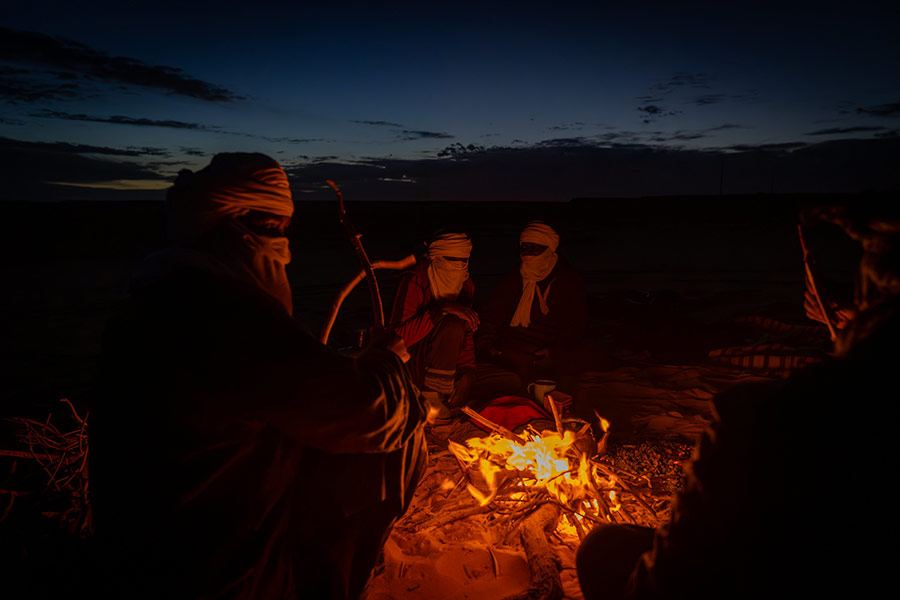
In the Tuareg world, the most important libraries are not written in ink, but spoken through lips and strings. Their oral traditions, passed from generation to generation, preserve history, laws, values, and emotion.
Women traditionally play the imzad, a haunting single-stringed violin whose voice seems to cry straight from the desert floor. Accompanying them is the deep thump of the tindé, a mortar drum whose rhythms are said to match the camel’s gait and the human heartbeat. Around evening campfires, men might recite tissewɛgh—improvised poetic duels that evoke love, honor, longing (assouf), and ancestral glories.
These musical rituals aren’t museum pieces; they’re living memory. At gatherings, you may hear folk songs with call-and-response choruses, ululation echoing across dunes, or an elder reciting verses to the backdrop of slow drumbeats. These moments—shared beneath a million stars—are where the Tuareg world opens up for outsiders willing to listen.
Between the Modern and the Traditional
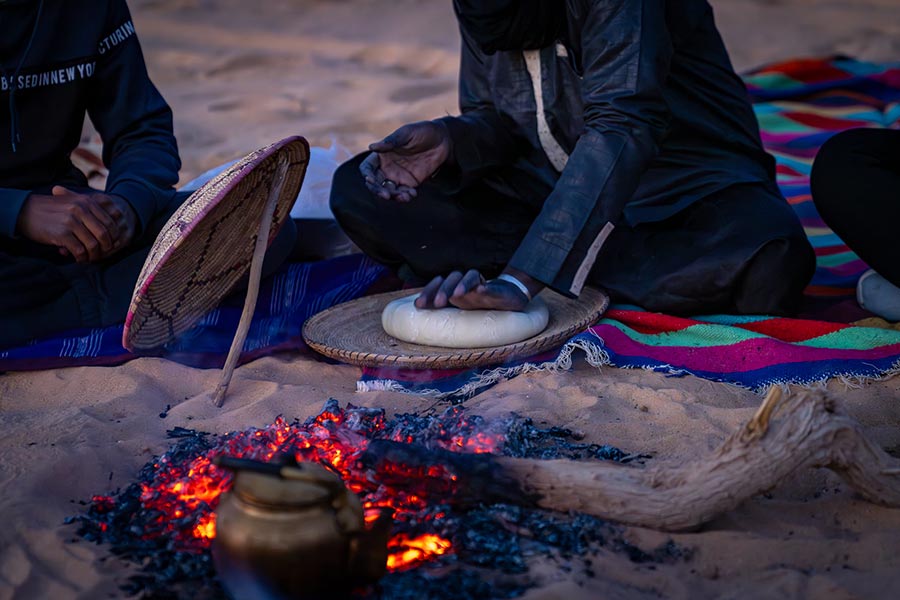
Today, the Tuaregs of Libya stand at a crossroads between the old ways and the demands of a new era. Some families still migrate seasonally with their herds, weaving between wells and grazing pastures. But many now live settled lives in Ghat, Ubari, or Sabha—partly due to drought, partly due to colonial pressures that discouraged nomadism, and later, the push for modernization.
The desert, once crossed by camel caravans, is now crisscrossed by 4x4s. Some Tuaregs have become expert desert guides, offering Libya desert by 4×4 experiences that bring travelers into their world—through canyons and into camps nestled near rock art older than the pyramids. Others work as artisans, crafting leather goods, silver jewelry, or traditional swords.
In December, the Ghat Festival brings Tuareg clans from across the Sahara to celebrate their shared identity. You’ll see camel races, sword dances, music, poetry, and a stunning array of indigo robes shimmering beneath date palms. It is a gathering of memory and pride, a chance to pass down stories to a younger generation and to remind outsiders that the Tuareg world, though evolving, is far from vanishing.
Meeting the Tuareg in Libya: Travel Insights
If you dream of drinking tea under the stars with the Tuareg, start in Fezzan—specifically Ghat, the Acacus Mountains, and the Ubari Lakes region. These are landscapes sculpted by time, once home to prehistoric artists who adorned the rocks with giraffes, elephants, and handprints of long-forgotten tribes.
To visit, you’ll need a local guide—not just for logistics, but for cultural mediation. Tuareg guides know the secrets of these lands: how to navigate a sandstorm, when to dig for water, where to find shade at noon, and how to summon a song at sunset. They’ll organize your journey through desert travel in Libya with the quiet assurance of those born to the sand.
Expect to sit on carpets beneath canvas tents or under open skies, sipping three rounds of tea sweetened with desert hospitality. Meals are simple but hearty—flatbreads baked in coals, dates, lamb stews, or the unique taguella: bread cooked in hot sand, served with sauce, and eaten communally.
At night, the Sahara reveals her final gift: silence. And above it, a star-scattered sky so clear and overwhelming it feels like you’re standing inside a forgotten cathedral. No ceiling, no noise. Just the shimmer of eternity. There are few places on Earth where stargazing in the Libyan desert becomes a spiritual act.
Cultural Etiquette and Practical Tips
Tuareg culture is remarkably open, but also layered with unspoken codes. Dress modestly. Both men and women should wear loose, long clothing (which is practical in the heat anyway). Women visitors are not expected to veil—Tuareg women don’t—but a scarf for the sun or mosque visits is useful.
When greeted, shake hands gently with the right hand, and offer a warm “Azul” (hello in Tamahaq) or “As-salaam alaykum.” Don’t rush—small talk matters. Sit for tea, share pleasantries, ask about family. It’s not business until there’s been some poetry.
Photography is welcomed in many contexts, especially at festivals, but always ask permission. Some Tuaregs are proud of their attire and happy to pose, while others prefer not to be captured. Your guide will help navigate this respectfully.
When to Visit and How to Prepare
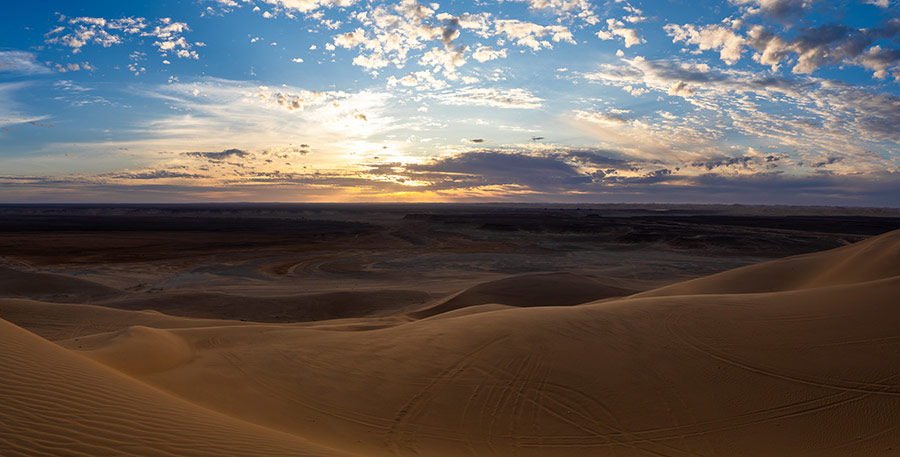
The best time for southern Libya journeys is between November and March, when daytime temperatures hover between 20–25°C (68–77°F) and nights, though chilly, are perfect for campfires. The December Ghat Festival is a highlight. Avoid summer—the heat is brutal and can exceed 45°C (113°F).
Travel requires permits, arranged in advance by trusted guides. Cell service is limited, so guides carry satellite phones. Expect basic infrastructure—no luxury hotels out here—but immense hospitality and simple comforts.
Pack for extremes: sun protection, layers, water bottles, hand wipes, and a spirit for discovery. This is not a trip for tourists; it is for seekers.
Echoes of the Ancients
The Tuareg world is not only a living culture—it’s a gateway to Libya’s deeper layers. Explore the prehistoric art in Libya at the Acacus, marvel at the Libya desert rock carvings near Takarkori, or trace ancient trade routes through Libya that once moved gold, salt, and souls across continents.
No trip to Libya is complete without engaging the desert’s first people. Whether you stay one night or ten, what remains with you is not just the scenery—but the silence, the tea, the laughter of a Tuareg child chasing goats beneath the palms, and the knowledge that you’ve touched a culture both ancient and enduring.
In a world rushing toward the future, the Tuareg remind us how to live in time—not above it. Their stories, sung under stars, are not fading echoes. They are hymns of survival.
And in listening to them, you become more than a traveler.
You become a witness.

